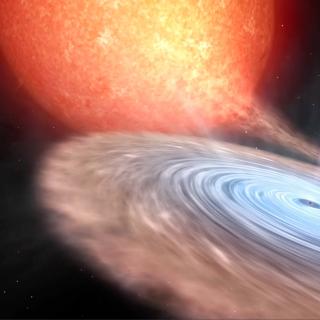Bibcode
Svoboda, Jiří; Dovčiak, Michal; Steiner, James F.; Kaaret, Philip; Podgorný, Jakub; Poutanen, Juri; Veledina, Alexandra; Muleri, Fabio; Taverna, Roberto; Krawczynski, Henric; Brigitte, Maïmouna; Datta, Sudeb Ranjan; Bianchi, Stefano; Muñoz-Darias, Teo; Negro, Michela; Rodriguez Cavero, Nicole; Castro Segura, Noel; Bollemeijer, Niek; García, Javier A.; Ingram, Adam; Matt, Giorgio; Nathan, Edward; Weisskopf, Martin C.; Altamirano, Diego; Baldini, Luca; Capitanio, Fiamma; Egron, Elise; Emami, Razieh; Hu, Kun; Marra, Lorenzo; Mastroserio, Guglielmo; Petrucci, Pierre-Olivier; Ratheesh, Ajay; Soffitta, Paolo; Tombesi, Francesco; Yang, Yi-Jung; Zhang, Yuexin
Bibliographical reference
The Astrophysical Journal
Advertised on:
5
2024
Journal
Citations
37
Refereed citations
31
Description
Black hole X-ray binaries exhibit different spectral and timing properties in different accretion states. The X-ray outburst of a recently discovered and extraordinarily bright source, Swift J1727.8–1613, has enabled the first investigation of how the X-ray polarization properties of a source evolve with spectral state. The 2–8 keV polarization degree was previously measured by the Imaging X-ray Polarimetry Explorer (IXPE) to be ≈4% in the hard and hard intermediate states. Here we present new IXPE results taken in the soft state, with the X-ray flux dominated by the thermal accretion disk emission. We find that the polarization degree has dropped dramatically to ≲1%. This result indicates that the measured X-ray polarization is largely sensitive to the accretion state and the polarization fraction is significantly higher in the hard state when the X-ray emission is dominated by upscattered radiation in the X-ray corona. The combined polarization measurements in the soft and hard states disfavor a very high or low inclination of the system.
Related projects

Black holes, neutron stars, white dwarfs and their local environment
Accreting black-holes and neutron stars in X-ray binaries provide an ideal laboratory for exploring the physics of compact objects, yielding not only confirmation of the existence of stellar mass black holes via dynamical mass measurements, but also the best opportunity for probing high-gravity environments and the physics of accretion; the most
Montserrat
Armas Padilla